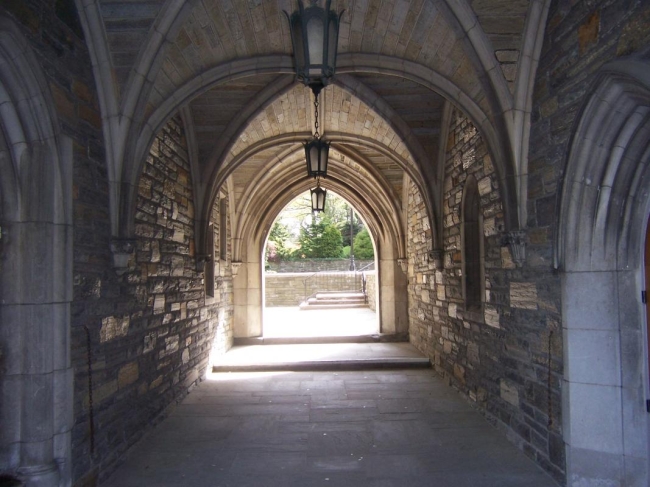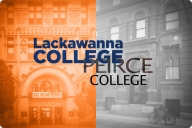You have /5 articles left.
Sign up for a free account or log in.

Saint Joseph's University is in talks to acquire the University of the Sciences in Philadelphia.
ChicagoMayne/Wikimedia Commons
A merger proposal between two long-standing private universities in Philadelphia that was revealed Wednesday seems to make sense from the perspective of the institutions’ programs, scale, financial condition and the state of the higher education market.
But like any merger-and-acquisition activity between two unrelated universities with hundreds of years of their own history, the potential deal raises deep questions of identity and strategy. It prompts some renewed reflection on a fast-changing higher education market that’s leaving some small institutions and their students with no simple options for the future.
The deal would have Saint Joseph’s University, a 6,800-student institution on the western edge of Philadelphia, acquiring the University of the Sciences, a 2,400-student university in West Philadelphia. Saint Joseph’s would keep its name, and leaders currently want Saint Joseph’s to continue operating both institutions’ campuses, which are located about five miles apart.
Few details are set in stone at this moment. Leaders at the two universities have signed a nonbinding letter of intent. They’ll spend several months evaluating the proposal before making a call on whether it should move forward. In other words, both sides could still walk away if new rounds of expanded negotiations fall apart.
For now, they’re saying glowing things about each other.
“Recently, a particularly promising and exciting opportunity has come to the fore,” Mark C. Reed, president of Saint Joseph’s, said Wednesday in a letter to faculty and staff members. “University of the Sciences, a premier health sciences university located less than five miles away, approached us as part of a structured and thoughtful process they decided to undertake. We were quick to see many potential benefits of a combination and were happy to begin talks.”
His counterpart at the University of the Sciences, Paul Katz, sounded similar notes.
“USciences is built upon a strong academic, geographic, and historical foundation,” Katz said in the university’s announcement to its faculty and staff members. “In exploring this partnership, we have the potential to be even stronger. We also believe in the rich history of Saint Joseph’s and their commitment to the same values that we hold dear.”
Neither university made their president available for interviews Thursday. They told The Philadelphia Inquirer that the proposed deal is about growth and scale but that it’s too soon to say whether it could lead to job cuts.
Faculty members at the two institutions were optimistic and even enthusiastic about the deal’s possibilities. Saint Joseph’s is a small, liberal arts-focused Jesuit institution in a competitive higher education market that increasingly demands scale, they said. The University of the Sciences is even smaller and has faced greater financial challenges of late, but it brings a suite of desirable health-care programs to the table.
“I’m really excited,” said Ann Green, a professor in Saint Joseph’s English department, president of its chapter of the American Association of University Professors and a past president of its Faculty Senate. “I think the partnership with the University of the Sciences brings a lot of new fields to Saint Joe’s that would really benefit us, and hopefully they’re as enthusiastic about liberal arts as we are. It gives everybody a lot more opportunity for growth.”
Green said she teaches a course in medical humanities. She’s excited to work with physical and occupational therapy students, as well as other students interested in health professions, if the deal is completed.
Saint Joseph’s opened its first new school in three decades, the School of Health Studies and Education, in 2019. It was a foundation for health care-related expansion, said Ronald Dufresne, interim chair and associate professor of management and director of the leadership, ethics and organizational sustainability program at Saint Joseph’s. But adding the University of the Sciences would represent a whole other level of opportunity.
The University of the Sciences, which was known as the Philadelphia College of Pharmacy and Sciences before 1998, considers itself the first college of pharmacy in North America. It was founded in 1821, making it older than Saint Joseph’s, which opened in 1851.
“We have a great history and we do great work,” said Dufresne, who is also a past president of the Faculty Senate at Saint Joseph’s. “We just haven’t had a big presence in the broad health-care realm in ways that schools really need. We have a really great health studies program, but we’re lacking all sorts of other programs in the health space. To merge is a great way into that space.”
Still, many issues remain to be hammered out. Some students and faculty members at the University of the Sciences are uneasy with the idea of their health-care programs being absorbed by a university related to the Roman Catholic Church, with its widely publicized stance against contraception and abortion.
“It has been a question from the student perspective, for me and for many other faculty who are not Catholic and not Christian,” said Eric Pelletier, an assistant professor of physical therapy at the University of the Sciences and Faculty Senate president there. “I think there will be an open dialogue about that. I really believe that will be discussed. If such a merger happens, it will be with an understanding that we need academic freedom and freedom for research.”
Nonetheless, Pelletier described a largely warm reaction to the news that Saint Joseph’s was a potential acquisition partner. Faculty members, who knew USciences sought a deal, were wondering whom the partner would be and how well they would know it.
“It’s interestingly positive, being a local university we’re all familiar with,” Pelletier said. “We know Saint Joe’s in the community. I think with the potential of this large change, there is some anxiety. But I think it’s more tempered with this sense of there is an opportunity here.”
Universities’ Challenges in a Tough Market
The University of the Sciences has been seeking to improve its market position in light of financial challenges. Its leaders have been open about seeking institutional partnerships. In 2019, the university announced agreements with Salus University to set up an optometric clinical site and give USciences students pathways toward doctoral degrees in audiology and master of medical science in physician assistant studies degrees.
In 2018, USciences executed a tuition reset, slashing annual undergraduate tuition and fees from $39,994 to $25,000. Professional program tuition also dropped. Undergraduate enrollment jumped from 1,231 in 2018-19 to 1,405 in 2019-20, although enrollment of graduate students, whose tuition was not reset, fell by seven students to 913.
Even so, the University of the Sciences has seen the number of its undergraduate applications fall and its acceptance rates rise since the 2018-19 academic year. Its endowment and similar funds declined from $171.8 million in 2018 to $145.6 million in 2020, according to documents filed for bondholders.
This December, Fitch Ratings downgraded its rating of the University of the Sciences bonds and revised its outlook to negative because the ratings agency didn’t expect improving cash flow margins.
“The university continues to weather challenges presented by its business profile, characterized by volatile enrollment and demand and high tuition dependence, as well as declining but moderate capital needs,” said a notice from Fitch explaining the move. “The Outlook is revised to Negative reflecting USciences inability to stabilize operations in the near term, which drives the need for ongoing support from its quasi-endowment and which relies heavily on investment returns for growth of its resource base.”
Moody’s Investors Service issued a similar downgrade earlier in the year. Both agencies kept the university’s ratings in the lower range of investment grade, however.
Saint Joseph’s offers the potential for a more secure future in the eyes of some faculty members at the University of the Sciences. Saint Joseph’s net assets increased by almost $1.8 million in the 2020 fiscal year, according to audited financial statements. The University of the Sciences saw its net assets decline by about $13.3 million.
The 2020 fiscal year was a difficult one for many institutions because of the COVID-19 pandemic. The divergence in the institutions’ financial performance was even more stark in the prior year. Saint Joseph’s added $8.5 million in net assets, while USciences lost $10.8 million
“From my perspective as a faculty member, it is having more financial stability and trying to worry less about drawing down the endowment,” said Pelletier, the Faculty Senate president at USciences.
It should be noted, however, that Saint Joseph’s is not a big fish in the pond -- and the pond in Philadelphia isn’t expected to grow. Saint Joseph’s total head count, including undergraduates and graduate students, fell from 8,415 in the fall of 2016 to 7,362 in the fall of 2019. This fall, it fell by almost 600 more students.
Demographers project the number of traditional-age students entering college from the Philadelphia market and the Northeast to decline in coming years. Projections in well-known demographer Nathan Grawe’s new book expect the number of high school graduates attending private four-year institutions after graduating from high school to be 5 percent lower in 2025 than it was in 2018 for Philadelphia. By 2035, the number is expected to be 36 percent lower than it was in 2018.
That’s important because both Saint Joseph’s and USciences draw heavily from the surrounding area. About four in 10 enrolling Saint Joseph’s students come from Pennsylvania, and another four or five in 10 have come from the Mid-Atlantic in recent years, according to documents filed for bondholders. That’s not far from enrollment at the University of the Sciences, where 54 percent of students came from Pennsylvania in the fall of 2020 and 34 percent came from New Jersey.
Simply expanding outside the region isn’t necessarily the answer. Demographic declines are expected to be felt in different ways across the country as a drop in birth rates following the Great Recession hits colleges and universities in the coming years.
The same trends are unfolding in the Northeast and across the country, said Omar Blaik, CEO of U3 Advisors in Philadelphia, which consulted with Marygrove College in Detroit as it faced challenges in recent years, ultimately deciding to repurpose its campus. U3 has done some work with USciences in the past, but not recently or regarding the new acquisition proposal.
“There is a stagnation in birth rates that probably will be with us for at least two decades if not longer, which basically is saying, in layman’s terms, we have more seats than warm bodies to fill those seats,” Blaik said. “Who is being affected the most? It’s the smaller colleges that have higher tuition than publics.”
But Saint Joseph’s reported the biggest enrollment declines over time in its College of Arts & Sciences. Its new School of Health Studies and Education received just under 100 deposits in its first two classes.
Eds and meds are extremely important to the Philadelphia economy. Eleven of the 15 largest private employers in Philadelphia were in education and health-care professions, according to a 2019 report from the Pew Charitable Trusts. Eight of the top nine largest employers were in those fields.
“For Saint Joseph’s to be a Philadelphia university and not have a strong health presence beyond what we currently have, that would be tough,” Dufresne said. “For us to be able to do it here with a merger, it’s very much what Saint Ignatius, if he were alive today, would be doing -- figuring out how to partner with others to advance the mission.”








